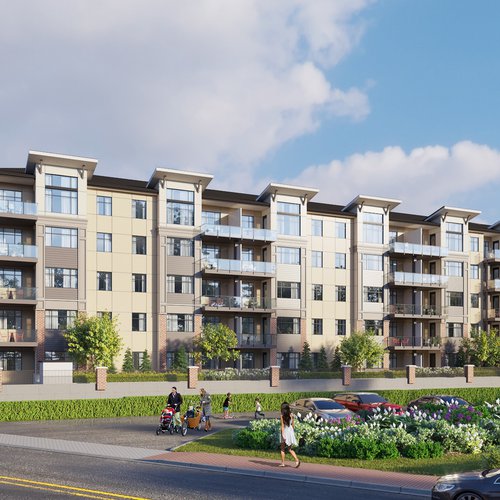Aug. 4, 2023
tags : categories: Exterior Rendering , Property Development , Architects , Commercial Rendering
Every commercial project begins with a vision - a design that serves a purpose, accommodates needs, and contributes aesthetically to the surrounding environment. This vision evolves into a plan and then into a tangible structure, profoundly impacting the urban landscape. In the modern architectural design and planning era, one technology has revolutionized the entire process - 3D rendering.
The Magic of 3D Rendering
3D rendering is an advanced technology that creates lifelike images from computer models, enabling architects and designers to present their ideas more effectively. It provides unparalleled detail, allowing all stakeholders to visualize a commercial building project before construction begins. 3D rendering is a transformative tool in the planning process, playing a critical role in the conceptualization, design approval, and communication of design intent.
The Conceptual Stage
During the conceptual stage, architects and designers are armed with their creativity and technical knowledge to draft the first sketch of a building. At this stage, having a technology that can translate these abstract ideas into something more concrete is incredibly valuable.
3D rendering can breathe life into these initial drafts. Architects can use 3D rendering software to input the dimensions, materials, and details into a model that generates a realistic visual representation. This high level of detail helps architects and designers evaluate their concepts from every angle, identifying potential design flaws and making adjustments as needed.
Approval and Communication
3D rendering's ability to create detailed visual representations profoundly affects the approval process. It assists in the effective communication of design ideas to project stakeholders, including clients, contractors, and regulatory bodies.
By visualizing the final product, stakeholders can easily understand the design's intricacies, how the building fits into its surroundings, and its potential impact on the local environment. It's far easier to grasp the scale, massing, and aesthetics of a proposed commercial building through a 3D render than through traditional 2D drawings.
Project Execution
The implications of 3D rendering go beyond initial planning and extend into the execution phase. With an accurate 3D model, architects and contractors can expect potential construction challenges. It allows for better coordination between different trades, reducing the possibility of costly construction errors.
Also, 3D rendering helps contractors and project managers understand the sequencing of construction activities, facilitating efficient scheduling and resource allocation. It simplifies the material estimation process, helping keep the project within budget.
Enhancing Collaboration and Inclusivity

Collaboration is key to the success of any commercial building project. 3D rendering creates an inclusive platform where architects, engineers, clients, and other stakeholders can collaborate more effectively. The accessibility of the 3D model promotes an exchange of ideas, inputs, and feedback from all parties, ensuring that the final design is a product of collective thought and effort.
A Tool for Sustainability
As our societies move towards more sustainable practices, 3D rendering is proving to be a crucial tool. By simulating different scenarios, such as the position of the sun at various times of the day and year, architects can assess how natural light will infiltrate the building. This enables them to optimize the design for energy efficiency, a critical aspect of sustainable design.
The Future is Here
3D rendering has opened new horizons in the planning of commercial buildings. Its role in conceptualization, communication, execution, collaboration, and sustainability shows the technology's immense potential. By visualizing ideas, scrutinizing designs, solving problems, and promoting sustainability, 3D rendering ensures that our urban landscapes are visually appealing but also functional, efficient, and sustainable.
Conclusion
In conclusion, 3D rendering technology is essential for effective planning in commercial building projects. Its utility in bringing a vision to life, enhancing communication, improving project execution, fostering collaboration, and promoting sustainability makes it a significant boon to the industry. The architectural design and planning world is undoubtedly set to benefit immensely from this revolutionary technology, creating a future that aligns with our collective goals and aspirations.










